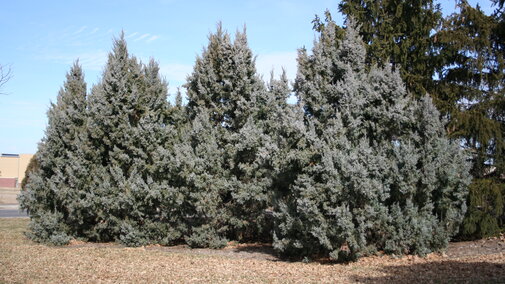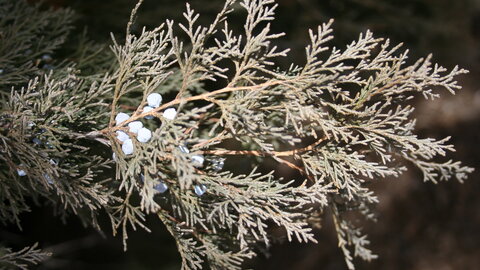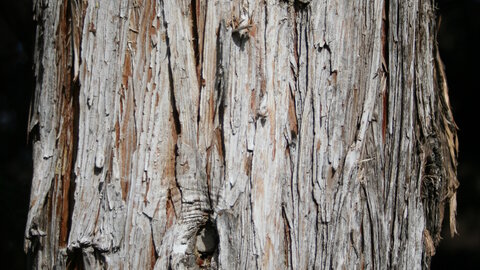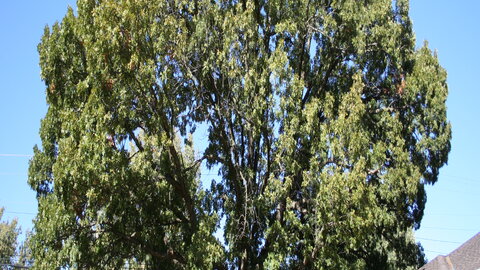Juniperus scopulorum
,
Coniferous
Origin:
Native to western Nebraska & Rocky Mountains
As its name implies, Rocky Mountain Juniper is a common evergreen throughout the Rocky Mountains, extending into the Pine Ridge and
Wildcat Hills of the Nebraska Panhandle. RM juniper is widely used in shelterbelts, wildlife plantings and landscape plantings in the
western Great Plains.

Where To Grow
Rocky Mountain Juniper is extremely drought tolerant and adaptable to a wide range of soil conditions including infertile, rocky,
sandy, or clay soils. RM Juniper’s drought tolerance makes it a good choice for visual screens and shelterbelts where little else will
grow. Many cultivars have been developed for landscape planting including very narrow types as well as bluish varieties.
Suitable to plant west of the 100th meridian.
Size at Maturity
Tree Height
Tree Spread
20-35'
15-30'
Wildlife Benefits
Junipers are important to wildlife throughout the country. Their twigs and foliage are eaten extensively by hoofed browsers, but the
chief attraction to wildlife is the bluish-black berry-like fruit. The cedar waxwing is one of the principal users of juniper berries,
but numerous other birds and mammals, both large and small, make these fruits and important part of their diet.
In addition to their wildlife food value, junipers provide important protective and nesting cover. Chipping sparrows, robins, song
sparrows, and mockingbirds use these trees as one of their favorite nesting sites. Juncos, myrtle warblers, sparrows of various kinds,
and other birds use the dense foliage as roosting cover. In winter, their dense protective shelter is especially valuable.
Utilization
Its most common uses are for fence posts and animal bedding.
Additional Considerations
All of the native junipers are valuable ornamental species, and many horticultural varieties have been developed, including ‘Cologreen’,
‘Pathfinder’, and ‘Wichita Blue’ (with a bright blue color). The close-grained, aromatic, and durable wood of junipers is used for
furniture, interior paneling, novelties, and fence posts. The fruits and young branches contain aromatic oil that is used in
medicines.
Related species
Rocky Mountain Juniper is closely related to eastern
redcedar (Juniperus virginiana) see separate description. It is also related to the Chinese juniper (Juniperus
chinensis), which has both tree and shrub forms regularly used as landscape plantings in Nebraska.
Interesting Facts
Rocky Mountain juniper is closely related to eastern redcedar and hybrid forms have been recognized where the two species overlap,
including in the Ash Hollow area of Nebraska. The tree is not considered to be aggressive like its redcedar cousin.


